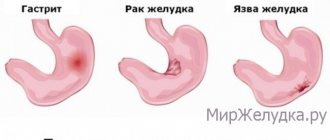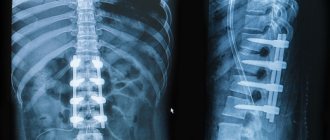Causes of nosebleeds in adults
The reasons why nosebleeds occur with low blood pressure can be different, as well as with high blood pressure. It is bad if such a phenomenon is systematic. Frequent and prolonged, abundant discharge signals the need to seek specialized help and undergo comprehensive diagnostics.
For high blood pressure
Let's consider at what pressure the nose bleeds more often. Against the background of hypertension, there is an increase in the load on the myocardium and an increase in the force of the action of blood on the vascular walls over time, this provokes thinning of the vessels, loss of their elasticity, which may favor their rupture. In general, if blood pressure is high, bleeding from the nose is quite common because the capillaries cannot handle the excessive strain.
It’s strange, but when blood pressure rises with high blood pressure, such blood loss is useful, because it helps to reduce it.
High blood pressure and nosebleeds are often interrelated. Moreover, it is better when the hemorrhage forms from the nasal sinuses, and not into the brain area, since this allows excess blood to escape out.
The following factors can provoke an increase in blood pressure with further nasal blood loss:
- excessive physical activity;
- increased air temperature;
- stress.
It is worth noting that against the background of hypertension, the flow of blood from the nasal cavity may be preceded by headaches and dizziness, and there is also a noise effect in the ears and instant lethargy.
When blood pressure has increased to 160/110, nasal blood loss is even desirable, because such a phenomenon is fraught with negative consequences for the heart and blood vessels. If this index rises above 200/100, then bleeding from the nose is extremely necessary, therefore, occasionally, with the development of a hypertensive crisis and the absence of any medications to eliminate this problem, the patient is lightly hit on the nasal septum to disrupt the integrity of the capillaries in order to cause blood loss .
For low blood pressure
Now let's look at why nosebleeds develop with hypotension. Hypotension, in comparison with hypertension, is not a critical condition for the patient’s life and well-being. Although a constant decrease in blood pressure has some impact on the functioning of certain systems and the body in general.
Often, low blood pressure develops against the background of anemia and a lack of hemoglobin in the bloodstream, which causes it to dilute and put less force on the vascular walls. A decrease in the level of hemoglobin and iron increases the tendency of blood vessels to damage, which also leads to blood loss from the nose. With low blood pressure, nosebleeds may occur due to dizziness and fainting.
Often, severely low blood pressure can be accompanied by nasal hemorrhage due to:
- severe fear;
- constant overwork;
- stress;
- lack of sleep.
In addition, with low pressure, nosebleeds can occur for the following reasons:
internal hemorrhage accumulated blood tries to get out, as a result it can come out through the nose or larynx;- hormonal imbalance - if the blood is very liquid, it leaks out even with minimal damage, and it will take a lot of time to stop it;
- myocardial infarction if the heart muscle ruptures, a cough mixed with blood is noted;
- Oncological pathologies are characterized by weakness, hypotension, anemia, and a weakened immune system.
Headache and nosebleeds
The combination of cephalalgia (headache) and nosebleeds is a classic manifestation of cerebrovascular accident and hypertension. Reason for development:
- concussion;
- intoxication (inhalation of the smell of toxic substances);
- damage to the skull or brain;
- excitement, stress factor;
- prolonged exposure to the sun.
In people who have experienced road accidents or other traumatic brain injuries, this condition worsens before the weather changes. Additional symptoms are nausea, lack of appetite, pallor, sharpening of facial contours, dizziness. Until the blood pressure levels normalize, the patient needs to be kept at rest; bed rest is important.
Causes of nosebleeds in children
In childhood, the cause of nosebleeds, in addition to changes in blood pressure, can be external or internal negative factors.
External causes of nosebleeds in a child include:
Decrease in air humidity. In this case, there is drying of the mucous membrane and weakening of the walls of blood vessels, as a result of which blood can begin to flow with minimal exposure.- Sunstroke. Due to overheating, blood vessels expand and rupture.
- Mechanical impact. This could be a bruise, careless handling of cotton swabs while eliminating discharge in infants, excessive nose blowing, or penetration of a foreign object.
- Use of medications. Vasoconstrictor drops, antiallergic and antiviral drugs can dry out the mucous membrane.
- Use of narcotic drugs. This is more suitable for older children: glue and cocaine can weaken the mucous membranes, which causes injury and bleeding.
- Past trauma. If the fracture does not heal properly or the septum is deviated, the risk of developing a nasal hemorrhage increases.
Among the internal factors are:
- diseases in which the mucous membrane swells: respiratory viral infections, influenza, inflammation of the maxillary sinuses;
- blood incoagulability;
- chronic diseases;
- malignant or benign tumors in the sinuses;
- the presence of congenital anomalies in the structure of the nasal cavities and blood vessels in them;
- hypertension.
In addition, nosebleeds can flow due to mental or physical fatigue, migraines, vitamin deficiency, or stress.
Etiology
Traumatic nosebleeds occur as a result of various injuries in everyday life, surgical interventions in the nasal cavity, and gunshot wounds. When the nose is injured, damage to the mucous membrane of the nasal cavity can be of varying degrees of severity.
Like mild, in which the symptom will be a single short-term bleeding. And significant, with a violation of the integrity of the labyrinths of the ethmoid bone, which can cause strong, profuse and frequent nosebleeds
, with a possible threat to the patient's life.
Nosebleeds very often occur due to attempts to remove crusts using fingers from the initial part of the nasal septum, in which a dense network of vessels is located (this area is called the Kisselbach zone). Also in this area, perforation of the septum often occurs due to the ongoing atrophic process or as a result of plastic surgery in the nose, which also causes bleeding.
Symptomatic nosebleeds are clinical symptoms of any existing somatic pathology
. The most common are diseases of the cardiovascular system (arterial hypertension, atherosclerotic vascular disease), urinary system (renal sclerosis, increased renal pressure), diseases of the hematopoietic system and its organs (leukemia, hemocytoblastosis, reticulosis), pathology of the vascular wall, hemophilia, diseases of a hemorrhagic nature (hemorrhagic vasculitis - Scheinlein-Henoch disease, hemorrhagic thrombosthenia and telangiectasia, capillary toxicosis).
Symptomatic is also called such bleeding, the cause of which is various inflammatory processes and tumors of the nasal cavity itself and its sinuses (paranasal). Among these etiological factors, one can distinguish a benign tumor (angioma or papilloma), malignant neoplasms (cancer or sarcoma), juvenile angiofibroma in the nasopharynx and ulcers, the origin of which can be syphilitic, tuberculous or some other.
In addition to all of the above, bleeding from the nasal cavity can also be caused by various other factors: lack of vitamins (hypovitaminosis or vitamin deficiency, most often ascorbic acid), changes in hormonal levels (in some cases, nosebleeds occur simultaneously with menstrual bleeding), decreased atmospheric pressure, significant physical overload , overheating of the body.
Causes of nosebleeds during pregnancy
For some women, nosebleeds during pregnancy are a common physiological feature that forms during hormonal changes after fertilization.
As a result, the following changes occur in the body:
the load on the walls of blood vessels increases;- blood flow increases;
- vascular tissue thins and becomes more fragile.
Causes of nosebleeds in pregnant women can be:
- avitaminosis;
- problems with blood clotting;
- mechanical injuries;
- blood stagnation in the cerebral veins;
- cardiovascular pathologies;
- renal failure;
- tumors;
- lack of calcium.
Also, nosebleeds can occur due to:
drying out of mucous membranes;- stress;
- excessive increase in air temperature;
- bad environment;
- lack of sleep;
- overheating due to a cold;
- irritability;
- treatment with certain nasal drops;
- strong nose blowing.
There are many factors that can provoke a nasal hemorrhage. But it should be noted that usually the reason lies in changes in hormonal levels.
Causes
The occurrence of bleeding in adults may be influenced by local or systemic factors.
Experts include local factors:
- external or internal trauma to the nose;
- the presence of a foreign object in the nasal cavity;
- inflammatory diseases, such as ARVI, sinusitis, rhinitis, sinusitis;
- abnormal development of the vascular system of the nasal cavity;
- drug use by inhalation;
- cancer of the nose;
- low humidity of the air that the patient inhales for a long time;
- the use of a nasal oxygen catheter, which dries out the mucous membrane;
- frequent use of certain medications in the form of a nasal spray;
- surgical interventions.
System factors include:
- allergic reactions;
- hypertension;
- increased physical activity;
- sun or heatstroke;
- colds;
- side effects of certain medications;
- frequent consumption of alcohol and alcohol-containing drinks, which cause dilation of the vessels of the nasal cavity;
- diseases of the circulatory system;
- liver pathologists;
- heart failure;
- severe infectious pathologies in which there is an increase in vascular permeability;
- some hereditary diseases;
- professional activities that are associated with sudden surges in pressure (divers, climbers, submariners);
- hormonal imbalances, for example, during pregnancy.
Video about the causes of nosebleeds
Causes in older people
At the age of over 45, epistaxis is much more common.
This is due to age-related changes in the nasal mucosa - it becomes much drier and thinner. At the same time, the function of vascular contraction is much lower than at a younger age. In more than 80% of cases when older people consult a specialist, the patient is diagnosed with disorders in the hemostatic system.
In addition, in elderly patients there is a sharp progression of hypertension, in which the fragile nasal vessels are not able to withstand blood pressure and rupture
In cases where elderly people, along with signs of hypertension, experience nosebleeds, it is very important to seek urgent help from medical professionals, because such a situation indicates that hypertension has reached its peak
Reasons why bleeding is observed from only one nostril
The following reasons contribute to the occurrence of blood flow from one nostril:
- deviated nasal septum;
- trauma to a vessel of the nasal passage;
- presence of a foreign object in the nasal passage;
- the presence of a benign or malignant neoplasm in the nostril.
What to do?
Let's consider what to do if there is blood flowing from the nose. In case of profuse nasal hemorrhage, lasting more than 10 minutes without weakening, although all possible measures have been taken, you should seek help from specialists - call an ambulance. In addition, calling an ambulance is necessary if nausea, lethargy, or fainting occur against the background of blood loss.
Most often, if the nose starts to bleed, it will be enough to provide the victim with timely and correct assistance.
Before giving the patient any medications, you need to determine the time the bleeding began and his blood pressure readings at that time. In the absence of such information, it is better not to use medications.
Main symptoms of nosebleeds
The vast majority of pathologies begin without previous symptoms. Characteristic symptoms include: vertigo (manifestation of dizziness), migraine attacks, tachycardia, hearing loss with tinnitus caused by impaired blood flow. Accompanied by hypertension and severe weakness, they pose a serious problem.
Various forms of pathology correspond to certain symptoms:
- In the initial form of pathological manifestations, symptoms include minor blood loss with signs of mild dizziness.
- In a mild form, weakness and tachycardia, tinnitus, signs of thirst and vertigo are noted.
- The average severity of the manifestation is characterized by severe dizziness, shortness of breath, a drop in blood pressure and tachycardia, signs of cyanotic changes in the skin.
- The severe form is manifested by hemorrhagic shock, severe lethargy, a drop in blood pressure, tachysystolic disturbances, and fainting.
A severe form of bleeding with large blood loss can become recurrent in nature, periodically recurring and causing mental disorders caused by oxygen starvation.
How to stop nosebleeds?
Stopping nosebleeds on your own involves doing the following:
- Calm the victim. Many people get scared at the sight of blood and begin to panic. This can significantly worsen the condition. So you should talk to the victim in a calm tone, but clearly explaining that such behavior can cause harm.
- Sit the patient with blood loss on something flat and firm. If you are in a room, open a window or door to allow air flow. The victim should have a straight back, tilt him slightly forward.
- To stop dizziness, soak a piece of cotton wool in ammonia, if it is not in any alcohol-containing, strong-smelling liquid.
- Apply ice; if it is not available, you can use keys or utensils. A cold object helps to contract blood vessels, which helps reduce blood loss. Insert cotton swabs into the sinuses to absorb the discharge.
- The victim should breathe through an open mouth and spit out blood clots, as they can lead to vomiting, which can worsen the condition.
- If a person has chronic hypotension, find out if he has medications that increase blood pressure. To increase this indicator, you can walk a little or do squats (maximum 10), but only after the bleeding has stopped.
- To achieve the desired result, you can give the victim a cup of coffee (espresso or Americano).
- A person with constant high blood pressure must always take medications with him to lower blood pressure. If they are absent, wait until the blood loss stops, give him cognac to drink, but not more than 50 grams. This drink helps to dilate blood vessels, reducing the pressure of blood flow on the walls in them.
Methods for treating nosebleeds
Drug therapy is the main step in treatment. Due to careful selection of appointments:
- Hemostatic drugs - “Epsilon”, “Abmen”, calcium and hemostatic agents are widely used.
- Enhances the therapeutic effect of "Vikasol". Its use is justified in cases of underlying liver pathology.
- To strengthen the vascular walls, drugs are prescribed that increase hemostatic functions - “Ascorutin”, “Vipraxin”.
- Drugs that prevent blood clots - “Kontrikal” or “Trasylol”.
- Coagulation correctors and immunoglobulin preparations that eliminate heavy bleeding.
- Complex therapy includes medications that eliminate the background pathologies that cause epistaxis.
All prescriptions, dosages and treatment regimens are strictly individual for each patient.
1. As a local treatment, to stop nosebleeds, use tampons soaked in plasma or citrate (sterilized) blood, hemostatic hemostatic sponges, fibrinous antiseptic biological tampons.
2. For nosebleeds from small vessels, various cauterization methods are used - laser cauterization and electrocoagulation, cryodestruction or ultrasonic disintegration.
3. Catheter oxygen therapy (inhalation of humidified oxygen), anterior or posterior tamponade - tampons from long bandages moistened with a hemostatic drug are inserted into the nasal cavity to stop blood discharge.
The following surgical techniques are used:
1. Vestibuloplasty – incision of the mucous membrane with and without detachment, removal of the submucosal layer from the nasal septum, curettage of granulation growths.
2. For more serious pathologies - vascular ligation, dermoplasty, replacement of the mucous membrane with a postauricular skin flap.
What should you not do if you have a nosebleed?
Proper first aid if your blood pressure has increased or decreased and your nose is bleeding is very important.
In order not to cause even greater harm to the victim, you need to know what actions are prohibited in such a situation:
- There is no need to tilt your head back; this can cause blood to flow into the larynx. If blood pressure is reduced, there is a possibility that the victim will faint.
- Do not blow your nose due to strong tension; pieces of blood that have formed and “closed” the areas of damage in the vessels may come off, which will lead to increased blood loss.
- Using water to rinse your nose will slow down blood clotting, and due to the additional load on the vascular system, blood flow will increase.
- Using vasoconstrictor drugs and nasal drops due to the sharp narrowing of blood vessels, bleeding accelerates, but many drugs can still be washed out by the bloodstream.
- Changing tampons frequently, the best option is to install cotton wool turundas for a maximum of 12-15 minutes. This is quite enough to protect the mucous membrane from injury, and the blood to clot.
When the nosebleed due to high blood pressure has stopped, you just need to sit quietly for 15-20 minutes. Do not inhale air through the nose very vigorously until normal blood pressure is restored (120-130/70-80 mm Hg). For the next 2-3 hours, drinking hot drinks (coffee, tea) is prohibited. You should give up alcohol, cigarettes and sports.
Clinical signs
Clinical symptoms of nosebleeds
will be typical, as with any bleeding.
Characteristic is the flow out of the nasal vestibule of scarlet, without foam, blood or, if the patient throws back his head, flowing down the posterior pharyngeal wall
. However, it differs from bleeding from the lower parts of the airways, since the blood flowing from there is typically characterized by the presence of foam and the absence of signs of flow along the back surface of the pharynx. When examining the nose, it is very common to see the source of bleeding, which is usually located in the front part of the nasal septum, called the Kisselbach area. If the place of bleeding is localized deep in the nasal cavity, it will not be possible to determine it. Most often, nosebleeds occur suddenly; some patients may notice the presence of warning symptoms - headache, tinnitus, itching, tickling in the nose.
How to stop bleeding
Stopping nosebleeds is not a problem in most cases. During an attack, you must take a sitting position and tilt your head forward. You can squeeze the wings of your nose with your fingers or put an ice cube on the bridge of your nose. A regular towel soaked in cold water will help stop the bleeding. If such a symptom occurs regularly, then not only special treatment is necessary, but also mandatory clarification of its exact causes.
How to treat with medications?
Treatment of nosebleeds with medications is carried out as first aid to the patient or in the presence of diseases of which it has become a symptom. The list of drugs is selected by the doctor based on the general clinical picture of the patient’s health condition. For example, if the cause of nosebleeds is vascular disease, then the course of treatment will include drugs to improve blood quality and eliminate existing diseases.
For nosebleeds you can use:
- vasoconstrictor drops used to treat a runny nose (Sanorin, Naphthyzin);
- Aminocaproic acid (the drug is administered intravenously, the procedure is prescribed by a specialist);
- calcium chloride (during nosebleeds, take 1-2 teaspoons of a 10% solution);
- Vikasol (the drug is administered intramuscularly, it is not intended for long-term use);
- Dition (a drug to normalize blood clotting, can be prescribed in a course);
- a swab with hydrogen peroxide (a cotton swab should be soaked in the preparation and inserted into the nasal passage).
Folk remedies
Some folk remedies for stopping nosebleeds may seem specific, but their effectiveness has been proven not only by many years of practice, but also by medical research. During an attack, for example, it is recommended to hang an iron key on a woolen thread around your neck (the key should be located on your back). Thanks to this technique, the blood stops almost instantly.
Examples of folk remedies to stop nosebleeds:
- salt water (dilute a teaspoon of salt in half a glass of water at room temperature, take two tablespoons of the resulting solution);
- aloe leaves (it is recommended to use aloe leaves not only during attacks of nosebleeds, but also for their prevention);
- a swab with fresh nettle juice (fresh nettle leaves must be washed, crushed and squeezed out the juice, moisten a cotton swab in the resulting liquid and insert it into the sinuses);
- alcohol lotion (a cotton pad should be moistened with alcohol and applied to the bridge of the nose);
- rinsing the nose with alum powder (the product is sold in pharmacies; one teaspoon of the powder should be dissolved in water at room temperature and rinse the nasal passages with it).
Treatment with medicinal herbs
For frequent nosebleeds or for their prevention, it is recommended to use herbal medicine. Herbs that can strengthen blood vessels include knotweed, stinging nettle, arnica, yarrow, horsetail and shepherd's purse. Dry mixtures can be purchased at a pharmacy or prepared yourself.
From each herb you can make separate decoctions or make a medicinal collection from them. The ingredients are first mixed in the specified proportions, and then a teaspoon of the preparation is poured with a glass of boiling water. The infusion can be used to wet tampons for nosebleeds or taken orally half a glass three times a day.
Collection example:
- stinging nettle (4 tsp);
- yarrow (1 tsp);
- horsetail (1 tsp);
- shepherd's purse (3 tsp).
Other recommendations
Patients with regular nosebleeds need to change their diet and replenish the supply of vitamins in the body. You should eat more foods containing potassium and ascorbic acid. You can take vitamins C and K, which are sold in pharmacies in various forms. Regular replenishment of the supply of useful substances in the body will not only eliminate bleeding, but will also provide complete prevention.
If you have regular nosebleeds, you should exclude aspirin-containing products from your diet:
- cherry;
- strawberry;
- raspberries;
- grape;
- blackberry.
Causes
The nose is an extremely delicate organ, prone to bleeding due to the anatomical features of its structure. Inside it there is a complex branched system of tiny blood vessels (capillaries). Located in the nostrils, they are easily injured. It can be caused by simply picking your nose, no matter how carefully you do it - with a finger wrapped in a handkerchief or using a cotton swab. In both cases, the result is the same - irritation of the nasal mucosa, its injury, fraught with bleeding.
Nosebleeds are more common in older people than in younger people. They mainly affect older women. This is due to the fact that with the onset of menopause, the tissues of the nose and its mucous membrane shrink and dry out. Causes of nosebleeds can be due to sudden weight loss due to a person's diet or illness - both of which also cause the nasal tissue to shrink. Regarding diseases, these could be allergies (one of the main provoking factors). Regarding the nasal cavity itself, this could be an infection or tumors (benign or malignant), polyps.
Nosebleeds in people who do not have health problems are usually not profuse. It can be the result of emotional or physical stress and can be stopped without outside help.
Often nosebleeds in a healthy person are caused by inhaling frosty or dry air for a long time. As a result, the nasal mucosa dries out and capillaries rupture. In this case, epistaxis is usually not abundant and stopping it is not difficult.
Other common causes of nosebleeds in a healthy person are associated with overheating in the sun, the so-called “sunstroke.” They are accompanied by headache, tinnitus, weakness and even loss of consciousness.
If the nose bleeds as a result of injury in the form of a blow or fall, it is likely to assume damage to nasal structures, such as the paranasal sinuses, cartilage, etc. In this case, along with bleeding, swelling and pain are observed in the area of the nose and surrounding tissues. If the injury involves a fracture of the nose, it is often noticeably deformed.
https://www.youtube.com/watch?v=hFe26R4-4z0
When epistaxis is not abundant and blood comes out in the form of clots with mucous secretions, this may indicate rhinitis (inflammation of the nasal mucosa).
If nosebleeds are accompanied by headaches, runny nose and increased body temperature, this may indicate the causes of inflammation of the paranasal sinuses in the form of sinusitis, sinusitis, sinusitis and other diseases of this kind.
The appearance of nosebleeds is possible in a person suffering from hypertension during a hypertensive crisis (significantly increased blood pressure), when the capillaries of the nasal mucosa rupture. This is especially common in older people. AD itself does not cause epistaxis, but enhances it.
Nosebleeds can be caused by the use of certain nasal sprays that contain corticosteroids or antiallergic substances and irritate the nasal mucosa (Nasonex, Beconase, etc.). Also, nosebleeds can be caused by long-term use of blood thinning medications that prevent it from clotting (Aspirin, Heparin, Warfarin).
Frequent nosebleeds, especially accompanied by increased bleeding of the gums, uterine bleeding and the appearance of bruises, are characteristic of some blood diseases, including: aplastic anemia, in which the bone marrow stops producing blood cells; leukemia (a malignant blood disease) and thrombocytopenic purpura, in which the number of platelets is significantly reduced.











